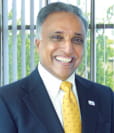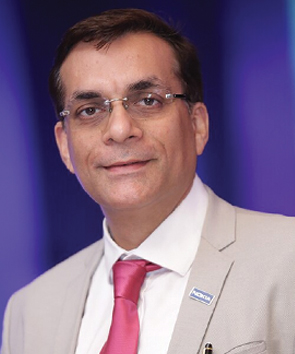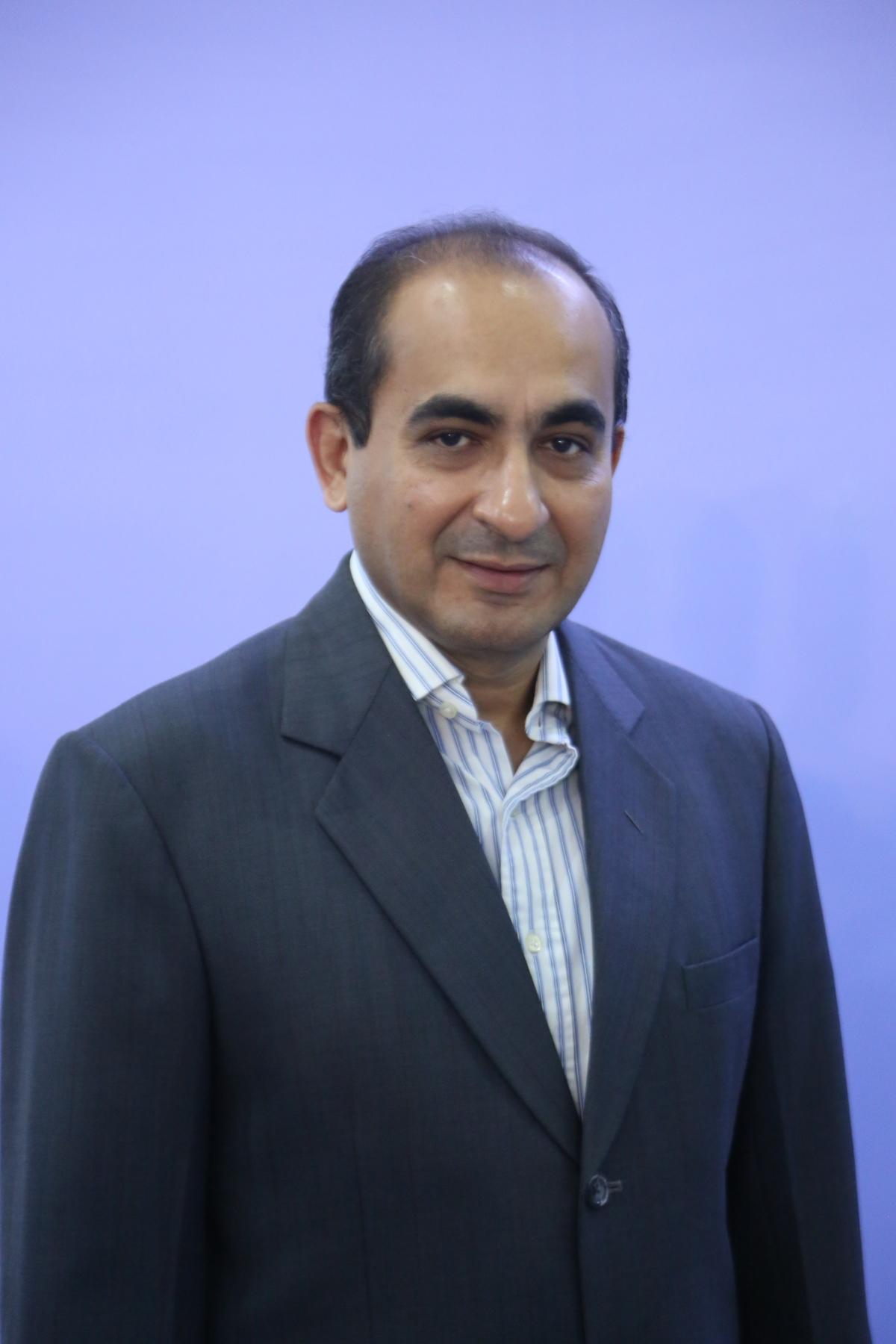CT Stories
Indian telecom–Amidst and beyond COVID-19
Rajan Mathews, P Balaji,Ankit Agarwal, Amit Marwah and Sachin Kalantri at a Webinar recently organized by Faisal Kawoosa, Chief Analyst, techARC, with Communictions Today as its media partner. A Report

 Rajan Mathews
Rajan Mathews
Director General,
COAI
“The telcos must be congratulated for the stellar fashion in which, given the surges and changes in network patterns, each one of them has stepped up and ensured that their respective networks are performing at 99.99 percent, and the customer experience is good. The consumers are recognizing the infinite value of the investment, the scale and scope with which the operators are implementing the networks, and their contribution to the economic, financial, and social health of this country. In spite of the many financial issues, the operators are facilitating just about every element of enterprise, connectivity, and the very possibility of working from home seamlessly.
Amidst COVID. One of the stellar outcomes of this particular crisis is the way the government and the industry have coalesced to work together in multiple operational aspects. The DoT, TERM Cell (the Telecom Enforcement, Resources & Monitoring subordinate offices of the DoT in the field), MeitY, state governments, and the police force are together trying to enforce various aspects of managing the COVID-19 issues.
We had a stellar experience while interacting with the DoT. They set up the equivalent of board rooms for operators and OEMs at the local levels. This prompted the local folks in listening to another government official. At the Delhi center, at the headquarters we were interacting with the DoT secretary, and the local advisers. The local advisers were passing on messages to the TERM cells, who passed them on to the district magistrates and the police force.
Discussions were held when the movement of our people was stopped. A chain of communication was formed from the DoT to TERM cells to the police force, which helped resolve the hurdles we came across. Letters were exchanged and passes issued so our team members could move around.
Another challenge was to get our cell towers on air, as many had been sealed. More than 800 BTSs were non-functional, because of various issues in the dynamics of the municipalities. With DoT’s and local municipalities’ intervention, only 70 towers remain non-functional. This had a significant impact in terms of bringing additional capacity in critical areas.
Fiber cuts because of the limitations in roadwork posed a major challenge. With intervention of the authorities, the fiber cuts, for instance, in one area were brought down from 100 to 7.
Thus, issues could be addressed on the ground level. There was support from TRAI as well, in terms of permissions to file statutory obligations. DoT also permitted various statutory filings of cell trials.
Most recently, we have requested for the mobile recharging retailers to open their outlets for offering telecom services to the public. And we expect that with the initiation by the MHA (Ministry of Home Affairs), customers will be able to recharge their phones. We had similar success for permissions for import of equipment by the OEMs, and for streaming service companies to transition from HD to SD. The government machinery played a huge role to ensure that the health of the networks did not suffer and customer experience was not compromised.”

 P Balaji
P Balaji
Chief Regulatory & Corporate Affairs Officer,
Vodafone Idea
“The entire telecom ecosystem has stepped up, be it the operators, the tower companies, the equipment players, or the fiber companies. There has been a significant increase in volume of voice and data. The focus had to be shifted from issues relating to financial crisis to what needs to be done for the larger goal the government has set for us. The entire government machinery has been stellar in terms of taking decisive steps in an extremely difficult situation. They first prioritized life and at this stage, the focus is also on livelihood. India has done spectacularly well, thanks to the government intervention, and telecom has been designated as a critical and essential service.
It has been a real challenge for our skeletal staff. They have ensured that the networks are manned, and the whopping increase in the voice and data traffic handled well. This included using new technology like massive MIMO at a scale not seen anywhere else in the world, capacity increased, setting up virtual boardrooms, providing solutions to stay connected with business activities, ensuring integrated business connectivity, and deploying suites of digital tools for the enterprise customers. Our teams toiled for hours, travelled across multiple police and district administration cordons to reach places of fiber cuts, or where network upgrades were required for congestion to be dealt with.
As an industry, we have stepped up and ensured that our customers have access to digital care and self-care at one end, and assured connectivity with some free talk time and free incoming calls for the lower end of the pyramid at the other. We are grateful to the prime minister and the government for taking decisive actions to keep our country safe. And in that spirit, we have ensured that the messages of the government and health authorities on safety measures have been carried out in huge measure. This is a defining moment for all of us as a country and for us as an industry.
Amidst COVID. Our network heroes, the field engineers, are travelling to remote places in difficult situations for hours and kilometers and staying overnight for upgrading networks. This was necessary for maintaining uptime, for our customers and enterprises that needed to work 24×7. There have been instances where there were complaints from remote bank locations. In one instance, there was a failure in an MPLS link due to fiber break that had to be dealt with as an operation of another branch in a remote area was being affected. The engineers ferried over and resolved the problem in a timely manner to be able to keep the essential banking operations up and running.
The entire digital infrastructure, which allows for digital payments, has significantly increased, and as an industry we have facilitated the same. Telemedicine and education are other instances of how we have added a significant heft to the efforts of the government to ensure that the nation keeps running. On the business side, we have worked with agile processes and focused on providing easy-to-use apps for consumers as well as business platforms for small and medium enterprises. Collaborative products, which deliver cloud-based solutions, be it from Microsoft or Google suites, or any other, are being provided, thus ensuring that video conferencing and cloud-based storage is available on an affordable basis to the enterprise clients.
Security solutions is another area where we have strengthened our effort and ensured the safety of our customers as well as enterprises, so that people do not hesitate to work on digital platforms. The quantum of recharges has almost doubled on the digital platform. Besides, the free time and incoming free traffic offered, has provided ease for people who want to contribute. An online recharge campaign was commenced for facilitating gift recharge to those in need. Such applications were encouraged, which were designed in real time to work and provide relief to a larger community. We have also ensured that wherever there is a new medical ward or a temporary facility created for handling the pandemic patients, coverage is provided. We have prioritized the government and health sector for enabling the facilities needed to ensure detection and prevention and ensured that all the aspects are taken care of, while using the networks as the foundational platform on which all of these applications and people are working.”

 Amit Marwah
Amit Marwah
Head of Marketing & Corporate Affairs,
Nokia India
“The phrase, we have reached unprecedented times, is being overused and misused. This is the new normal. We are now in a new environment, with some challenges expected to stay. Telecom has become the backbone of running the country, be it entertainment, phones, home broadband, medical services, or financial inclusion. We are seeing the emergence of transactions through digital wallets and social connections on Houseparty and Zoom. A new way of life seems to have been discovered.
We at Nokia, with the intelligence and experience of other markets had anticipated the Indian crisis, prior to the spread of the COVID infection, and were able to take prompt action. We were prepared, as we had run our business continuity plans with Vodafone, Airtel, Jio, and other operators, and conducted several mock drills much before the lockdown. A VPN gateway was set up in Mumbai on an emergency basis, IT systems were enhanced, software was installed on the laptops, and COVID war room had been setup. As a result, our networks are working efficiently, albeit with a skeletal staff and with remote working. The entire industry pitched in, and there was no feeling of competition among the stakeholders at this juncture. In comparison with other countries, India has set a great example of efficiently organizing the entire ecosystem.
Amidst COVID. While the crisis is ongoing on a global level, we have understood that the demand and need of the operators and end-customers will change rapidly. We have offered solutioning our portfolio re-alignment in real time in three categories – secure, scale, and simulate. The need to secure the networks is top priority. As a vendor, we have recommended to the operators to use software features for capacity enhancement, massive MIMO as a technology, spectrum aggregation while transitioning from 3G to 4G, thereby increasing capacity. These ensure security and keep the networks running in this enhanced-capacity mode and at the same time scale them in a limited fashion.
Beyond COVID. How networks evolve will change the future. Going forward, business continuity plans will be a top priority. Analytics and automation will gain importance, voice over LTE, and voice over Wi-Fi will see much more traction. There will be an increased need for emergency alerts and PPDR-type of solutions. Development of technologies like Internet of Things (IoT) will see acceleration. For instance, the demand for drone applications is increasing in surveillance and site services. It will further lead to deliveries and beyond. Requirement will bring changes.
From an application perspective, there will be an augmentation in demand for solutions like e-health, fixed wireless access, remote surveillance, and huge bandwidth for cloud robotics, and Industry 4.0. 3D video conferencing will become a norm, because of limited travel. Trends and developments, which were only being discussed, will become more relevant to the present situation.”
 Ankit Agarwal
Ankit Agarwal
CEO Connectivity Solutions,
STL
“In the current scenario, the networks are critical as it is not just work from home but doing everything from home. This is becoming the way of life. TCS recently asserted that only 25 percent of their workforce will work from their offices by 2025. It is a dramatic shift, given the large number of employees they have, and this trend is expected to stay, globally, at the operators’ end and at large enterprises.
One of the big shifts is that instead of network traffic coming from large offices or corporate sites, it is distributed, as people are now taking traffic from home. It is evident that fiber-to-the-home, fiber-to-the-X, fiber to the small cell, with MIMO and other applications, a lot more fiber will go deeper and denser into the cities. And the operators and the government will be required to work much more closely to simplify ROW and resolve other issues. It is more critical than ever to bring the network closer to the users.
Another trend is the huge surge in dual network, in both the upload and download, as OTT platforms like TikTok and Zoom lead to upload, more than ever seen before. It requires the network to be built for a robust upload and download, and low latency, which translates into huge investment. For the last couple of months, Sterlite Technologies has done a great amount of work in our business continuity plans, as part of support to the essential services. The requisite permissions were granted to our manufacturing operations. Observing all the safety protocols, we have been servicing the telecom operators, not just in India, but also globally. Additionally, we are responsible for maintenance of the Army’s network, even in J&K. There is a distinct shift perceived among operators in India and worldwide, and the internet service providers. The government will need to ramp up the fiber network significantly.
Beyond COVID. In the recent budget, Rs 60,000 crore was allocated for healthcare and Rs 90,000 crore for highways. On the other hand, an income of Rs 60,000–70,000 crore is expected from the telecom sector. Without in any way undermining the other sectors, the ongoing pandemic and need to do everything from home, may make the government rethink of telecom as an enabling infrastructure for health and education, where it also needs to invest and not just as a source of income.
In another instance, in January 2020, the US government announced a USD 20 billion over 10 years’ rural digitization plan. This is a benchmark for us, as it essentially bridges the digital divide between the rural and urban. And while our government has been working on BharatNet and similar projects, a lot more needs to happen and the government needs to relook at both rural and open connectivity, and find ways to fund the projects, as considering the operators’ financial situation it will not be viable for them.
5G spectrum is another area of concern. Germany raised 6.6 billion euros from its 5G mobile spectrum auction from four operators. Due to the pandemic, the operators, after being awarded the spectrum, had to delay the launch of 5G services to 2021. We do not want to have a similar situation in India where the spectrum is so expensive that its saps the ability to invest in next-generation networks, and make the network itself a reality. These are issues that the government needs to address as moving forward, there has been a fundamental change on how the world will connect, especially in India. What are the governments in other countries doing? What are the good learnings and the way they are addressing issues can help rapidly change our way of working to enable this infrastructure.
I am bullish on the operators ramping up their network infrastructure. Jio, for instance, is targeting 35 million subscribers within the first year of commercially operationalizing its fiber-based broadband business. Airtel and ACT are ramping up payment methods. Two of the operators we work with are looking at a 30–50 percent jump in connection. One of our global partners, Telefonica, has seen more traffic in the last one month than they have in the entire year. There is a disruptive change in the network. The network will have to be upgraded, whether it is fiber, or wireless, or fixed wireless.”
 Sachin Kalantri
Sachin Kalantri
Senior Director, Product Marketing,
Qualcomm India & SAARC
“In the current scenario, home has become an office, a school, and even telemedicine is being used for ailments. Entertainment has reached a new level. It is important that our information superhighways are preserved, developed, and nurtured. This has become a strategic infrastructure for the country. We have seen COVID-19 and we hope that there is no COVID-20 or 21; however, we need to be prepared.
We are seeing an increase in the number of online activities handled. Such activities are being enabled by a combination of technology, infrastructure that has been laid out by operators, and a huge variety of devices brought together by OEMs, as well as the app ecosystem offered. The telecom operators have done a phenomenal job. As the number of devices in a home increase, new ways of connecting devices will emerge. It is important to have guidelines laid out by the government. All in all, the telecom industry will play a major role in the time to come.
Beyond COVID. There is a critical need for enhancing the broadband infrastructure, both in terms of broadband to the home as well as devices. There is also the need for enabling newer use cases. For example, virtual reality-based use cases, which can enable conferencing in such a way that it seems more real than what we are doing today. Devices, technology, and infrastructure are an issue currently. What is required is a local wheel throughout the ecosystem, starting from the government to the operators, infrastructure providers, stakeholders, and app developers. When we were at the juncture of launching 4G, doubts were raised on the need for 4G as 3G seemed sufficient. However, over a period of time, there have been many new unprecedented use cases. Similar shall be the experience with 5G.
A vision to move this forward for the entire ecosystem needs to be crafted. Two of our neighboring countries are investing heavily in 5G. Technology is no longer a barrier. It has to be ensured that the collective wisdom and will of the government and people come together to make this a reality.”














You must be logged in to post a comment Login